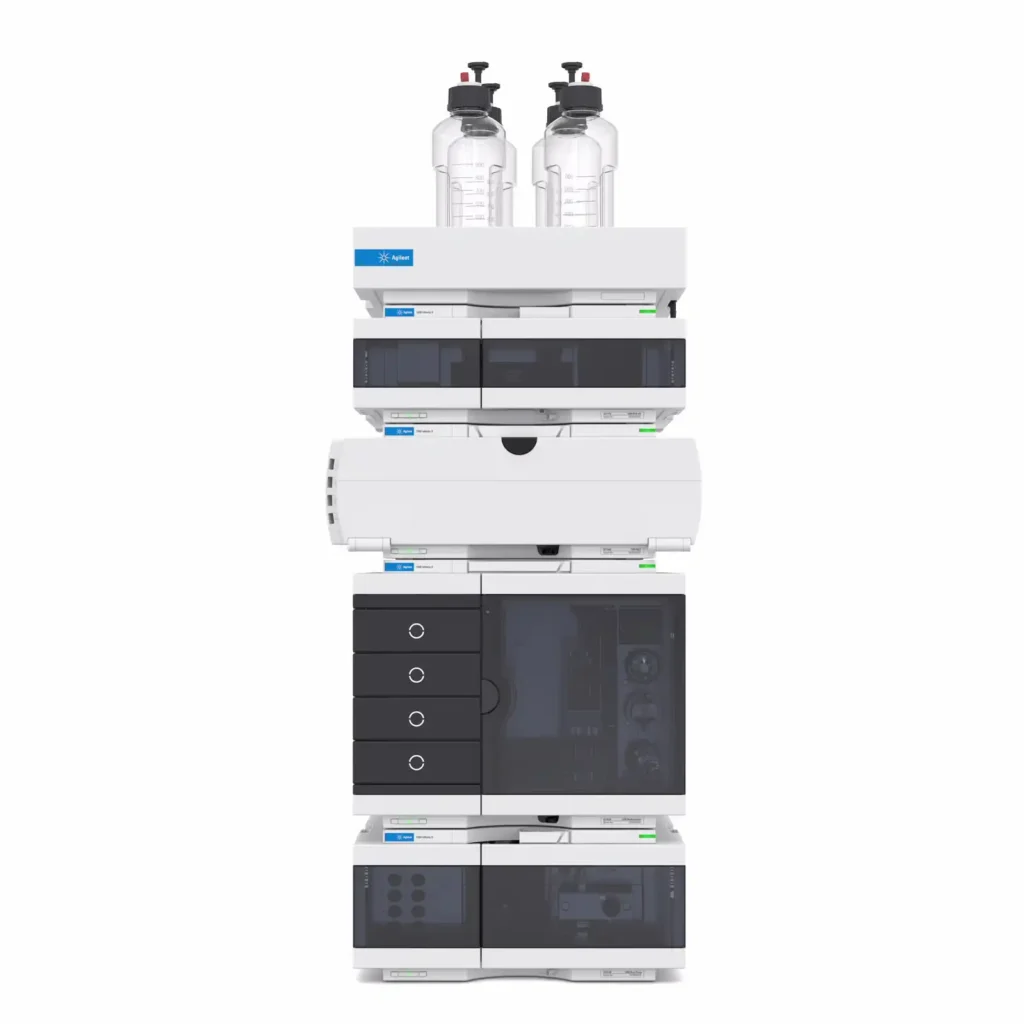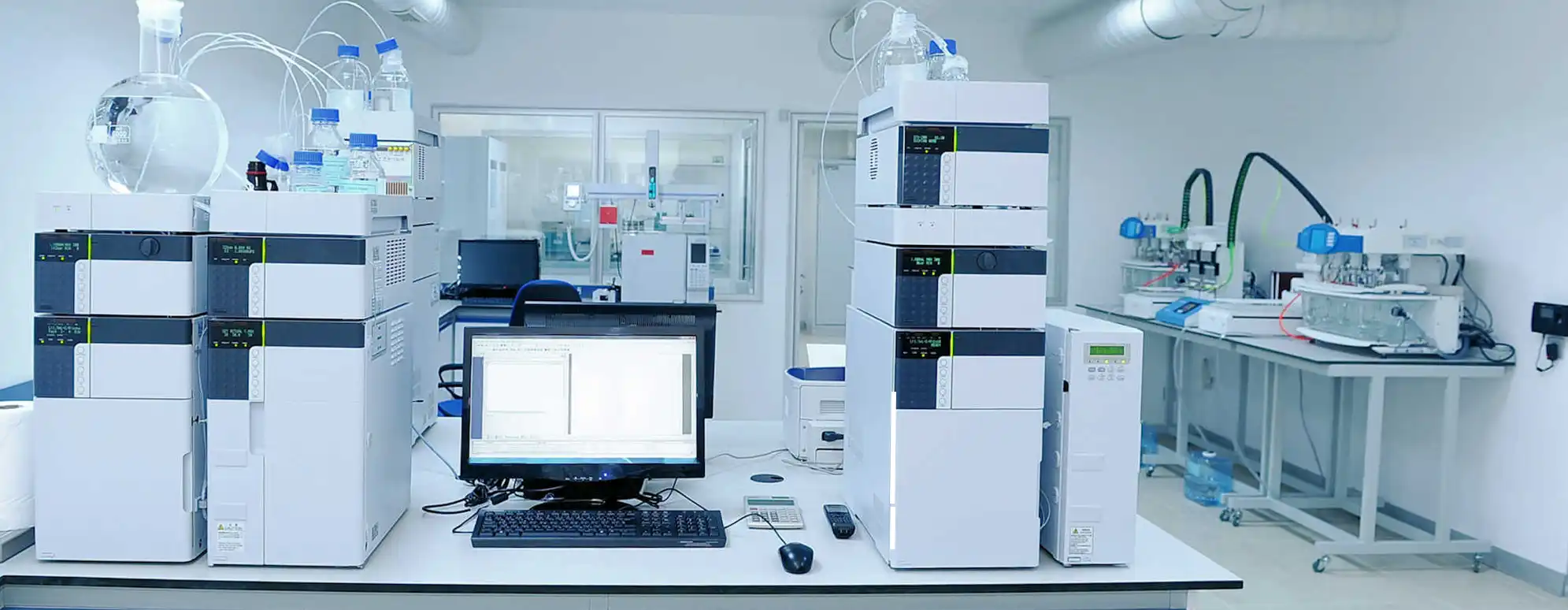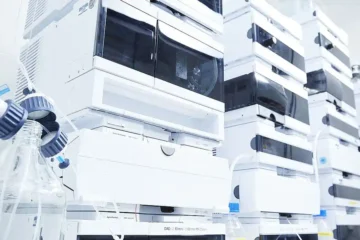High-Performance Liquid Chromatography (HPLC) is a powerful and widely used analytical technique that plays a crucial role in various fields, including pharmaceuticals, environmental science, food and beverage testing, and biochemistry. HPLC enables the separation, identification, and quantification of components in a mixture with high precision and speed. This article provides a comprehensive introduction to HPLC, explaining its principles, components, types, applications, and advantages.
What is HPLC?
High-Performance Liquid Chromatography is a form of liquid chromatography that utilizes high pressure to push the mobile phase through a column packed with stationary phase material. HPLC is particularly valuable for separating compounds in complex mixtures, allowing for detailed analysis and quantification.
Key Components of HPLC
Understanding the fundamental components of an HPLC system is essential for grasping how the technique operates. Here are the primary components:
- Mobile Phase
The mobile phase is the solvent or solvent mixture that carries the sample through the system. The choice of mobile phase is critical as it influences the separation efficiency, resolution, and retention times of the analytes. Common solvents include water, acetonitrile, methanol, and various buffer solutions. - Pump
HPLC pumps are responsible for delivering the mobile phase at a consistent flow rate and pressure. High-pressure pumps are essential in HPLC to ensure that the mobile phase moves through the packed column efficiently. The ability to maintain precise flow rates is crucial for reproducibility. - Injector
The injector introduces the sample into the mobile phase stream. It can be a manual or automated system that ensures a consistent volume of the sample is injected. Automated injectors are particularly useful in high-throughput laboratories. - Column
The HPLC column is packed with stationary phase material, which interacts with the analytes as they pass through. Columns come in various lengths and diameters, and the choice of stationary phase (e.g., silica, polymer-based) depends on the specific application and the chemical nature of the analytes. - Detector
The detector measures the concentration of analytes as they elute from the column. Various types of detectors are used in HPLC, including UV-Vis, fluorescence, and mass spectrometry detectors. The choice of detector depends on the properties of the analytes and the required sensitivity. - Data System
The data system collects and processes the signals from the detector, generating chromatograms that display the separation results. Modern HPLC systems include software for data analysis, allowing for easier interpretation of results.

How Does HPLC Work?
HPLC operates based on a principle called “partitioning,” where compounds in a mixture are separated due to differences in their interactions with the stationary and mobile phases. Here’s a step-by-step overview of the process:
- Preparation
The sample is prepared, often requiring dilution or filtration to remove any particulates that could interfere with the analysis. - Injection
The prepared sample is injected into the mobile phase stream using the injector. - Separation
As the mobile phase moves through the column, the analytes interact with the stationary phase. Some compounds will adhere more strongly to the stationary phase, while others will pass through more quickly. This differential interaction leads to the separation of compounds based on their retention times. - Detection
Once separated, the analytes exit the column and pass through the detector. The detector generates a signal proportional to the concentration of each compound, which is recorded as a chromatogram. - Analysis
The resulting chromatogram displays peaks representing the different components of the mixture. The area under each peak is proportional to the quantity of the analyte, allowing for quantification and identification.
Types of HPLC
HPLC can be categorized into several types based on the mode of separation, each with its specific applications and advantages:
- Normal Phase HPLC
In normal phase HPLC, the stationary phase is polar, and the mobile phase is non-polar. This method is particularly effective for separating polar compounds. - Reverse Phase HPLC (RP-HPLC)
Reverse phase HPLC is the most common type, where the stationary phase is non-polar, and the mobile phase is polar. It is widely used for the separation of non-polar to moderately polar compounds, including many pharmaceuticals. - Ion-Exchange HPLC
Ion-exchange HPLC separates ions and polar molecules based on their affinity to the ion-exchange resin. This method is especially useful for analyzing biomolecules like proteins and nucleotides. - Size-Exclusion HPLC (SEC)
Size-exclusion HPLC separates molecules based on their size. Larger molecules elute first because they cannot enter the pores of the stationary phase, making this method useful for polymers and biomolecules. - Affinity HPLC
Affinity HPLC utilizes specific interactions between an analyte and a ligand attached to the stationary phase. This technique is highly selective and is often used for purifying proteins or other biomolecules.
Applications of HPLC
HPLC is a versatile technique with a wide range of applications across various industries:
- Pharmaceutical Industry
HPLC is extensively used in drug development for the analysis of active pharmaceutical ingredients (APIs), impurities, and degradation products. It is also essential for quality control and stability testing of pharmaceutical formulations. - Environmental Analysis
Environmental scientists use HPLC to detect and quantify pollutants in water, soil, and air samples. It is particularly useful for analyzing pesticides, herbicides, and other organic contaminants. - Food and Beverage Testing
HPLC plays a critical role in food quality control, ensuring that products meet safety standards. It is used to analyze additives, preservatives, vitamins, and contaminants. - Biotechnology and Biochemistry
In biochemistry, HPLC is employed for the separation and purification of proteins, nucleic acids, and metabolites. It is an essential tool for research in drug discovery and development. - Clinical Research
HPLC is used in clinical laboratories for the analysis of biological fluids, such as blood and urine, to monitor drug levels and diagnose diseases.
Advantages of HPLC
HPLC offers several advantages over other separation techniques, making it a preferred choice in many laboratories:
- High Resolution and Sensitivity
HPLC can separate complex mixtures with high resolution, enabling the detection of trace levels of analytes. - Speed
The high pressure and efficient separation mechanisms allow for rapid analysis, making HPLC suitable for high-throughput applications. - Versatility
With various modes of separation and detector options, HPLC can be adapted to analyze a wide range of compounds, from small molecules to large biomolecules. - Reproducibility
The precise control of flow rates and conditions in HPLC ensures reproducible results, which is critical for regulatory compliance in industries like pharmaceuticals. - Automation
Many modern HPLC systems are equipped with automated sample injection and data analysis capabilities, streamlining workflows and improving efficiency.
Challenges and Limitations of HPLC
While HPLC is a powerful technique, it does have some challenges and limitations:
- Cost
HPLC systems can be expensive, both in terms of initial investment and ongoing maintenance. - Solvent Compatibility
The choice of mobile phase solvents can affect the stability of certain analytes, requiring careful selection and handling. - Maintenance
Regular maintenance is necessary to ensure optimal performance and to prevent issues such as blockages in the column or detector.
High-Performance Liquid Chromatography is a vital analytical technique that has revolutionized the way we separate, identify, and quantify compounds in various fields. Its high resolution, sensitivity, and versatility make it indispensable in pharmaceutical development, environmental monitoring, food safety testing, and biochemical research.
Understanding the principles and components of HPLC is crucial for professionals in the field. As technology continues to evolve, advancements in HPLC will further enhance its capabilities, paving the way for more efficient and effective analyses.
For those interested in learning more about HPLC and its applications, stay tuned to HPLC Professionals. We are committed to providing valuable resources, insights, and updates to help you navigate the complexities of high-performance liquid chromatography with confidence. Whether you’re a seasoned expert or new to the field, we are here to support your journey in this fascinating area of analytical science.




